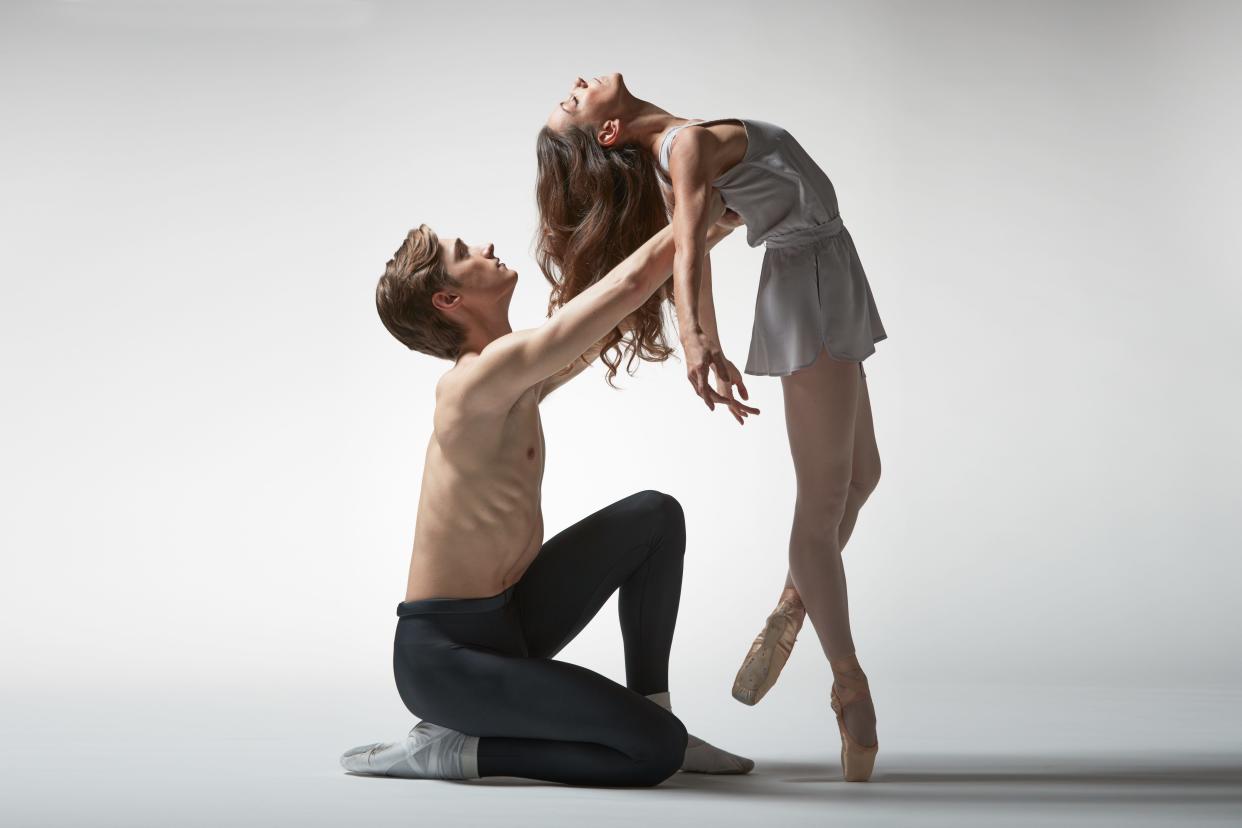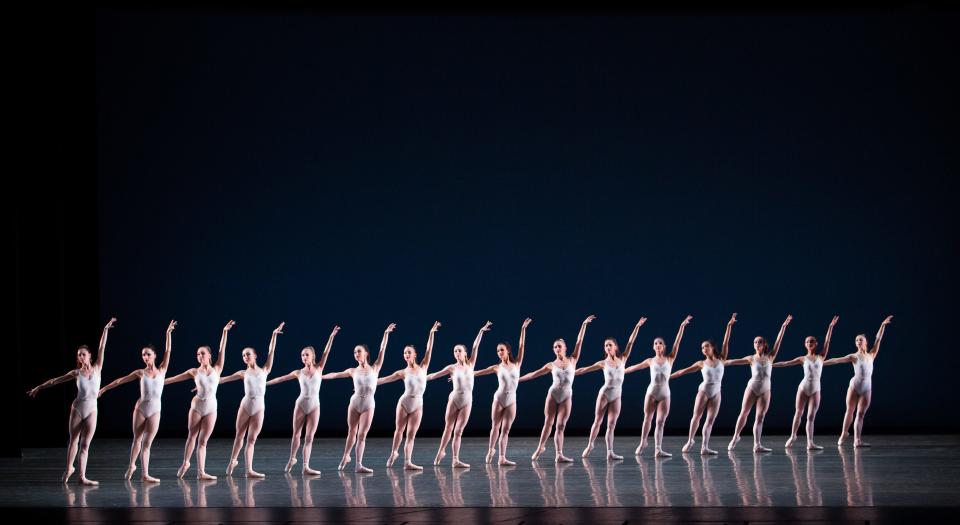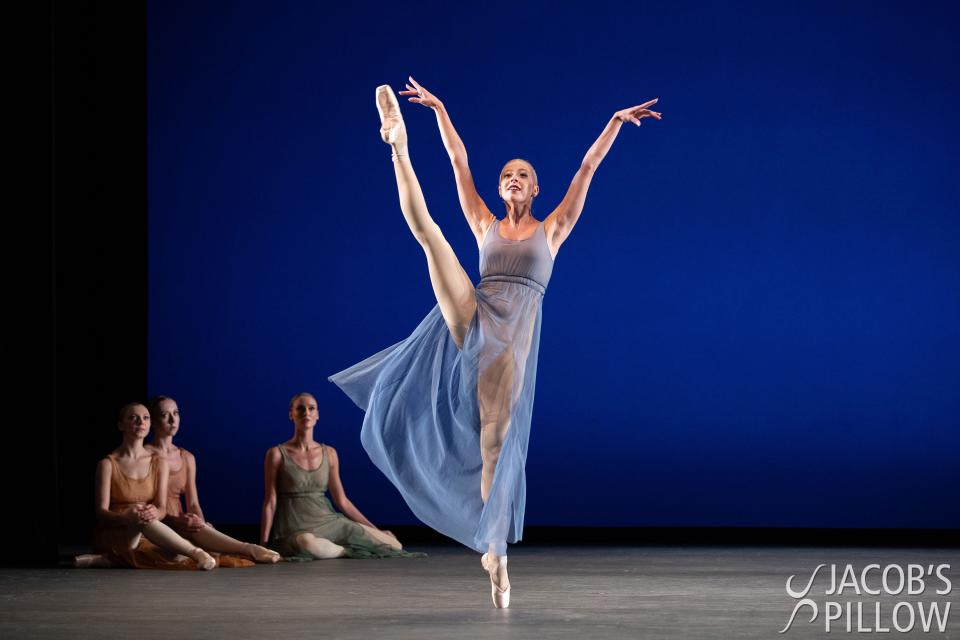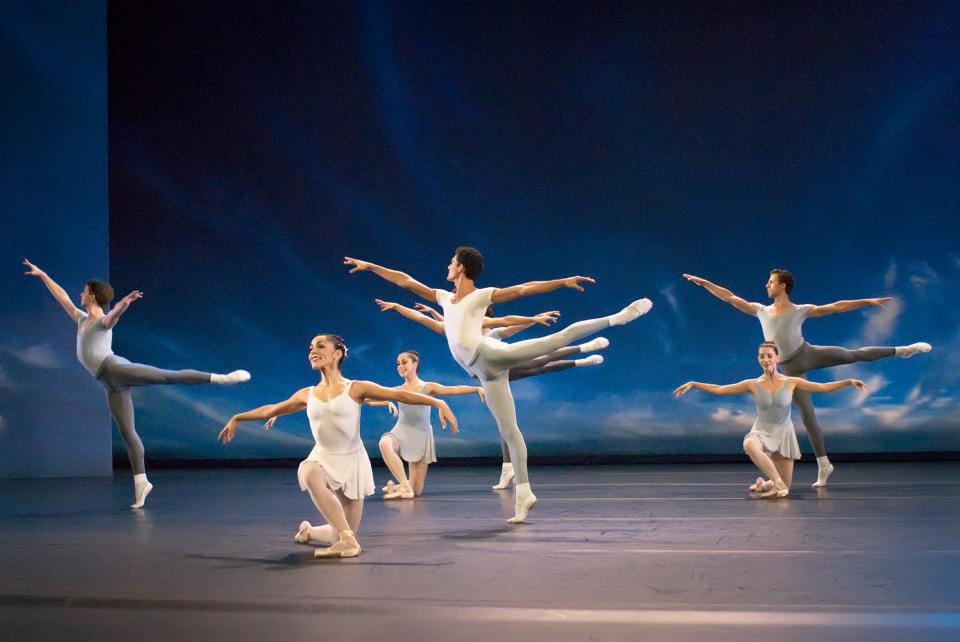Balanchine's 'Symphony in Three Movements' stands out in Miami City Ballet finale

- Oops!Something went wrong.Please try again later.
- Oops!Something went wrong.Please try again later.
- Oops!Something went wrong.Please try again later.
Miami City Ballet presented the fourth and final program of its 37th season of dance last week at the Kravis Center with “Entradas (Entrances),” a curated set of four dances commemorating George Balanchine and Jerome Robbins.
A highlight of the evening was the musical direction of Kennedy Center honoree and Pulitzer Prize-winning composer and conductor Tania León, a Cuban-born American trailblazer and longtime friend of artistic director Lourdes Lopez. León’s life-long relationship with dance began in 1969 when she was recruited by Arthur Mitchell to be the founding music director at the Dance Theater of Harlem, and afterward worked closely with both Balanchine and Robbins on their repertoire.
One could not help but reflect on the significance and sentimentality of León’s presence as she led the Opus One Orchestra through the scores of Claude Debussy and Igor Stravinsky.
Closing the program and saving the best for last, “Symphony in Three Movements,” a leotard-and-ponytail ballet that was quintessentially Balanchine set to Stravinsky’s 1945 score of the same title, was undoubtedly the program’s compositional and performance climax. Dressed mostly in black and white, the large cast of dancers darted, chugged, and pranced in and out of complicated formations, following grand battements with hip thrusts to create a modern and exciting visualization of the dramatic and complicated score.

Seeming to revel in Balanchine’s movement, the dancers were energized by the music’s syncopated rhythms. A lovely movement canon opened and closed the work, and it struck me how fresh and enthralling the piece was, despite being 50 years old. The leading couples, designated by the female artists in shades of pink, were confident and adept in their partnering.
The explosive final notes of the musical composition were matched by the striking ending pose, with the company of dancers forming a Mondrian pattern, a pose that left a lasting impression of visual design.
Of special mention here is principal dancer Tricia Albertson, who was partnered on this occasion by Renan Cerdeiro. After the Miami run next week, Albertson will bid adieu to the stage after a 26-year career with the company.
Often paired together on the same program, both of Robbins’ works, set to Debussy, created an elegant and somewhat melancholy juxtaposition of sensory experience to the Balanchine works that came before and after.
“Afternoon of a Faun'' first premiered in 1953 and was a contemporary variation of Debussy’s music (1894), Stephane Mallarmé’s poem (1876), and Vaslav’s Nijinsky’s dance (1912) on the same subject. A subtle and quiet pas de deux, the piece was compellingly performed by Dawn Atkins and Stanislav Olshanskyi, a 29-year-old Ukrainian dancer who joined the company in 2022. Olshanskyi gently guided his hand along Atkins’s long blond hair and then lifted her weightless, a gesture of great tenderness.

“Antique Epigraphs” is a dance for eight women in diaphanous, muted-colored tunics, who floated in and out of Greek-inspired poses. The four beautiful soloists emerged, each exploring a different character, and then returned to the group, who elicited striking poses of modern dance, with curved arms and parallel feet. It is here where we recognized how choreographically different Robbins was from Balanchine in both his lyricism and phrasing.
What had been billed as the most anticipated and unprecedented work of the season, Lopez’s reinterpretation of Balanchine’s “Square Dance” opened the evening. A brief history of Balanchine’s nod to Americana revealed it was first presented in 1957 and included a caller on stage with the dancers. When Balanchine presented “Square Dance” again in the 1970s, he added a slow and thoughtful male solo toward the end of the work, and he (wisely) removed the caller altogether.
Set to pieces by Vivaldi and Corelli, the high-energy choreography was a descendant of the ballet of the 17th and 18th centuries, with emphasis on intricate footwork (including the gargouillade), formality of design, and the lead couple’s introduction of movement themes that were echoed by the corps. Focusing on Balanchine’s musicality (and blocking out the other theatrical elements), there was fun inherent in the spirit of the work: With a stretch of the imagination, we “saw” the dancers at a party, grabbing a partner and do-si-doing around each other.
Unfortunately, our imaginations as audience members have limits.

The addition of the caller was distracting, and as a result, illuminated other aspects of this production that were disjointed. As Miami references were called out using a mic downstage, mimicking the rhythm and rhyming of a traditional caller, our attention was diverted away from the dancers.
Although I was rooting for the dancers, especially Taylor Naturkas and Alexander Peters, I felt perhaps they, too, were a bit confused.
Like Balanchine, Lopez tried something new. Sometimes, it just doesn’t work. “Entradas” runs through today at the Kravis Center and then closes at the Arsht Center in Miami from May 19-21.
This article originally appeared on Palm Beach Daily News: MCB finale falls short with 'Square Dance,' soars with 'Symphony'

